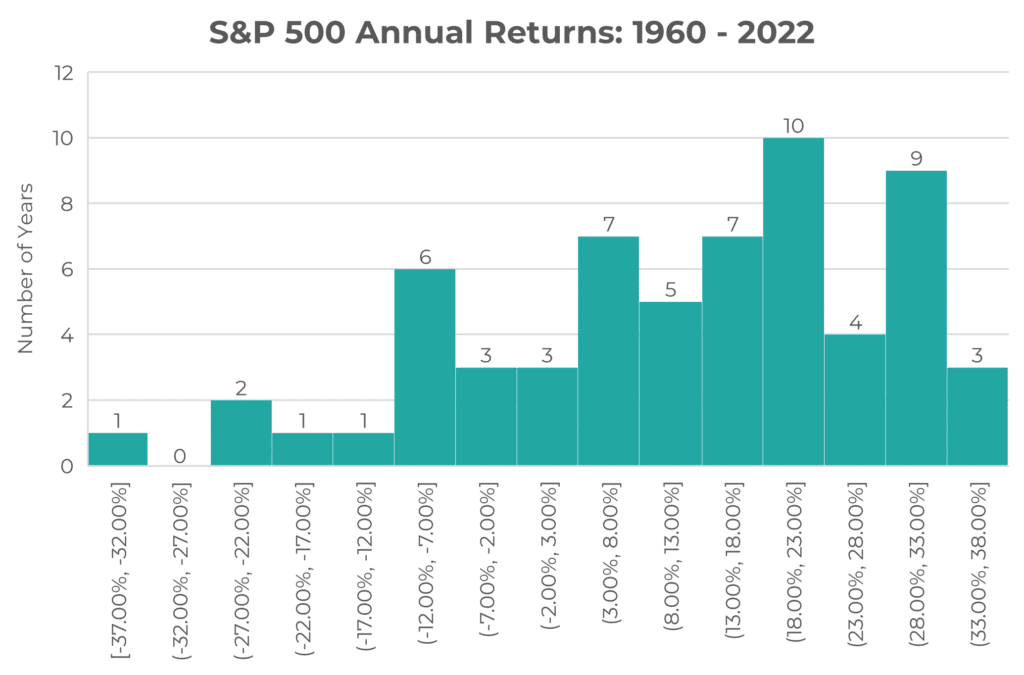Investors are often hounded with phrases related to how a security, or a fund, compares to the market. “High beta” and “low beta” are common, you might also see “upside and downside capture”, and “market neutral” strategies are gaining popularity in the retail advice landscape.
But it is worth stepping back for a moment to consider “what is beta?” and “when do I want beta?” – knowing the answers to these questions will serve an investor well, next time they’re faced with the prospect of tilting their portfolio “high beta or low beta”.
What is Beta?
Beta is a term from quantitative finance, which is the measure of volatility that a security/portfolio displays relative to some market benchmark.
So, applying that to the two terms we just established:
- “High beta” means the security/portfolio is more volatile than the market
- “Low beta” means the security/portfolio is less volatile than the market
But we also use beta as a term to express getting exposure to the market – in the sense that if you add ‘equity beta’ to a portfolio, you are gaining exposure to the equity market (exposure more often than not simply means ‘volatility’), likely in the hope that equities are going to appreciate in value.
If you are adding beta to a portfolio, you are essentially adding exposure to the market – for example, this might be wanting to add growth equity beta, so you buy a NASDAQ 100 passive ETF.
This application of ‘beta’ is what the remainder of this note will focus on: when should you want to increase/decrease market beta within a portfolio?
Market Beta in a Portfolio
As with most aspects of investing, there’s rarely one single factor which prompts an investment decision like “do I want to take more or less broad market risk in my portfolio?”.
The below are some broad variables which investors should consider before taking more or less equity beta on:
- Economic outlook: if an investor sees a deteriorating economic outlook in the near future, they are not likely to want to add more equity beta*
- Interest rates: if central banks are hiking interest rates, this tends to have a negative impact on risky assets like equities; so, an investor would not look to add equity beta during a hiking cycle
- Valuations: price is the ultimate driver of long-term performance, if valuations at an index level look cheap, an investor may look to start adding market beta to that index
- Market breadth: there are certain environments where a few companies or a single sector (think US tech and the FAANGs) drive the performance of the overall market; in situations like this, sometimes it is simply easier for an investor to take market beta to capture that upside rather than individually pick stocks in the face of what is largely a sentiment-driven environment
*Unless the market is already pricing that negative outcome in with declining earnings forecasts and valuations, then it’s already in the price
Putting that in a more visual form, this might represent a simplified matrix of considerations to add/reduce market beta from a portfolio:
| Add Beta | Reduce Beta | |
| Economic Outlook | Improving outlook, strong growth prospects/reducing inflation | Deteriorating outlook, sluggish or negative growth/uncontrolled rising inflation |
| Interest Rates | Peaking interest rates or declining rates during central bank cutting cycle | Rates just beginning to rise or sharply rising rates during central bank hiking cycle |
| Valuations | Index valuations (P/E, P/B, CAPE etc) cheap relative to own history and relative to other indexes – e.g. ASX 200 vs S&P 500 | Index valuations growing increasingly expensive, pricing in unrealistic earnings growth / multiples |
| Market Breadth | Market being largely driven by a key sector or companies on sentiment, favouring passive/beta | Market driven by fundamentals, dispersion between winners and losers in the index, favouring active |
2021 and 2022 – A Case Study in Beta
2021 and 2022 were almost textbook examples of the scenarios we just provided in that table, and make a compelling case study to illustrate when an investor might want beta in their portfolio.
Firstly, let’s consider the spread of annual returns for the S&P 500 between 1960 and the close of 2022:

Source: Bloomberg, Innova Asset Management
We can see that, on average, the S&P 500 has very few down years, with 2022 being one of the more aggressive in the 60-year time window:

Source: Bloomberg, Innova Asset Management
Which brings us to the case study of 2021 and 2022.
In 2021, we had the following dynamics:
- Economic recovery following the COVID-19 pandemic
- GDP growth of 12.2% following GDP growth of 0% in 2020
- Inflation at 1.4%, declining from 2.3% in 2020
- A Fed Funds rate of 0.25%, unchanged from 2020
Those dynamics fit squarely within the ‘Add Beta’ column, particularly when you consider that it was the Technology sector leading the vast majority of index performance.
In 2021, the S&P 500 (here our example of ‘market beta’) returned 28.68%, in the top 15% of annual returns for the market. By most metrics, this was a time that you wanted to add beta – the market was trading at an expensive multiple, but the macroeconomic forces at play were ideal to drive broad index performance versus attempting to find more nuanced relative value opportunities.
Turning our attention to 2022:
- Despite clear supply chain issues and growing concerns around economic growth, things still looked high but at a much slower rate of growth
- Inflation was beginning to rise and ended the year at 7%
- The Fed began its most aggressive hiking cycle in decades, something which was evident would happen given inflation, increasing rates by 4.25% over the entire year
These dynamics had been building and if your evidence had pointed even vaguely towards this scenario, an astute investor would have started to pare back market beta from their portfolio. The result of 2022 was the S&P 500 dropping -18.13%, in the bottom 5% of annual returns for that market.
Betting on Beta
The ‘beta allocation’ table we have put forward is a stylised, simplified way that an investor might think about the issue of how much market beta to include in their portfolio. As with most investment concepts, there are layers of nuance and sophistication which can be added in to enhance the process and give you greater confidence in your decision.
In Innova’s own philosophy, strict valuation discipline and a focus on risk-management does lean towards adding beta when a market is cheap / pricing in a worse economic outcome than we expect, and removing it when a market is expensive or is not accounting for potentially hard times to come.
Whatever your investment philosophy, maintaining a clear and actionable approach to taking market beta is essential to managing a successful portfolio in the long term, whilst also being a highly effective tool to manage risks and drawdowns.







Quarterly market update | Q2 2025